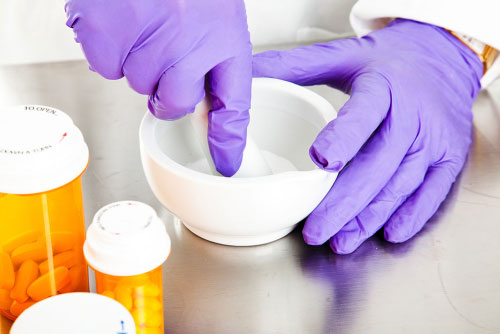Yesterday, FDA issued two draft Guidance documents that address the compounding of essentially commercially available drug products. The two documents, one for compounding pharmacies under Section 503A of the Act (here) and the other that addresses outsourcing facilities under Section 503B of the Act (here) describe FDA’s view of how the issue of compounding essentially commercially available drug products will be evaluated under the Act and when such products might be subject to FDA enforcement action. These Guidance documents represent an ongoing effort by FDA to provide their current thinking on the issue of prescription drug compounding.
FDA notes that restrictions on compounding drugs that are essentially copies of commercially available drug products assures that compounders or outsourcing facilities do not compound drug products outside of the exemption limits in Section 503A or 503B of the Act. In addition, FDA outlines additional factors that influence their thinking on such compounding:
- Prevents the compounding of drugs that may not be safe or effective.
- Protects the integrity and effectiveness of the new drug and abbreviated new drug approval processes, as well as the Over-the-Counter monograph system.
- Sponsors would be less likely to invest in and seek approval of innovative, life-saving medications if an outsourcing facility could, after a drug is approved, compound “substitutes” that may be less expensive, because they have not gone through the drug approval process.
- Sponsors would also be less likely to seek approval of an ANDA for a generic drug if outsourcing facilities were permitted to compound drugs that are essentially copies of approved drugs without going through the ANDA process (which would further assure bioequivalence of the product).
The draft Guidance documents speak to the definition of essentially a copy of a commercially available drug, describes FDA’s view of what constitutes limits on the volume of drug products that may be compounded, and provides examples of products that may be compounded with changes that are necessary because of the needs of an individual patient (e.g., need for a different strength, removal of an ingredient in the commercial formulation that the patient may be allergic to, or the need for a different dosage form, or appears on the FDA drug shortage list under a “currently under shortage” designation, etc.).
FDA is also requiring that the pharmacist or outsourcing facility document when a prescriber determines that a change is necessary for a particular patient on the prescription, if the physician or healthcare provider has not done so.
Compounders should pay close attention to these draft Guidance documents to assure they are in compliance with FDA thinking. One question that arises from reading the document is how much FDA guidance in these two documents will impact State Pharmacy Practice Acts. Keep your eye on these documents and comments that may be submitted to the FDA through the relevant docket numbers to see what the industry, states, and the public may think.




